Calories, sugar, fat: here's how your favorite candy stacks up
A nutritionist reveals what's really behind the nutrition label of sweets like Twizzlers, Snickers and Skittles.
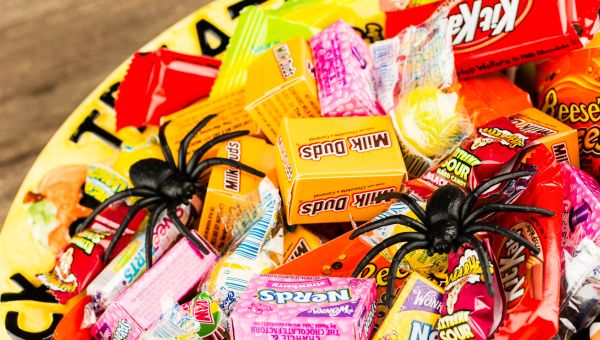
It can be tough to resist Halloween candy. Fortunately, enjoying a piece or two won't completely wreck your diet, but it's important to mind your intake. Candy, even the fun-sized bites, packs a caloric punch. It is typically loaded with artery-clogging saturated fats and unhealthy added sugars. Some sweets, however, make better indulgences than others.
To get the scoop on holiday treats, and their "healthier" counterparts, we enlisted the help of Robin Silverman, RD, a certified diabetes educator and the clinical nutrition manager with Plantation General Hospital in Plantation, Florida.
"It's fine on special occasions to have a couple of pieces as a treat," she reassures. Silverman suggests first eating a well-balanced meal, made of lean protein, whole grains, vegetables, fruits and a serving of healthy fats, before making your sweet selections. Before you grab your favorite piece of candy, read on to find out just how many calories and how much fat and sugar these little suckers pack.

Snickers
In 2017, Americans purchased more than 140 million dollars' worth of this nutty candy bar, making it the second most-sold snack sized chocolate in the US. This bar is created by layering peanuts, nougat and caramel, finishing with a coating of milk chocolate.
Two fun size candies contain 160 calories, 18 grams of sugar and 3 grams of saturated fat. Peanuts offer more than an addictive crunch. A two-treat serving offers about 4 grams of heart-healthy unsaturated fats and 2 grams of protein, much of which likely comes from the nuts. "Even though they're high in fat, nuts have healthy fats that help lower your risk of heart disease," Silverman says.
Still, a Snickers bar isn't the most nutritious snack, because it lacks vitamins and minerals essential to keeping your body healthy.
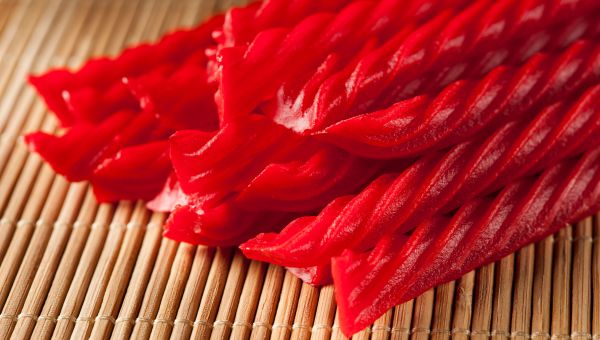
Twizzlers
Per piece, individually wrapped strawberry licorice contains 30 calories and about 4 grams of sugar. If you munch on the recommended serving size, which is four twists, Twizzlers deliver 120 calories, 1 gram of fat and 15 grams of added sweetness.
Unfortunately, these candies aren't incredibly filling and can leave you hungry for another treat soon after finishing the last chewy bite. Before settling on your snack, Silverman recommends giving the nutrition labels a look. "If the first ingredient is sugar, that's probably not the best choice that there is," she says. The first and most abundant ingredient in this treat is corn syrup, one of the many names for sugar often seen listed on food labels.
If you've got a serious hankering for licorice, grab just one or two twists, and leave the rest for another snacker.
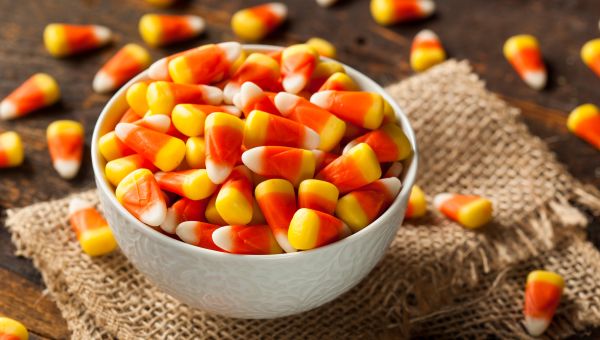
Candy corn
These brightly-colored kernels can be totally polarizing—if you don’t love candy corn, you probably hate it. This treat may be named after a veggie, but it certainly does not contain any of the nutrients the real thing does. Candy corn is very low in fat, however, which may be appealing to some.
Per serving (19 pieces), this candy contains 140 calories, 28 grams of sugar and no fat. Almost the entire candy is made up of sweet stuff. In fact, the first ingredient is sugar, followed by the sweet stuff in other forms, like dextrose and corn syrup.
If you're looking to avoid some added sugars, Silverman recommends serving yourself an ounce of unsweetened dried fruit, like raisins, which contains 84 calories and about 17 grams of natural sugars. Dried cranberries are another sweet option but many varieties are loaded with added sugar and some contain sugar-sweetened fruit juice, too. Select a package with nothing but fruit or dehydrate your own for several hours in a low temperature oven.

Reese's cups
A spoonful of natural peanut butter adds creamy flavor, protein and healthy fats to smoothies and fruits like apples and bananas, but the kind crammed in the middle of this popular Halloween candy isn't so wholesome. Two regular cups contain 220 calories, 4.5 grams of saturated fat and a whopping 22 grams of sugar.
US dietary guidelines recommend keeping your added daily sugar consumption to just 10 percent of your calories. On a 2,000-calorie diet, that's just 20 grams, and a single serving of peanut butter cups contain more.
In small doses, sugar won't harm the body, but it will add extra calories to your daily total, without offering any nutrients. This, Silverman says, is the biggest issue with overdoing the sweets. "You're getting less nutrition for the amount of calories you're taking in," she says.
If you really need to get your peanut butter and chocolate fix, nosh on two miniature cups with 88 calories, 2 grams of saturated fat and 9 grams of sugar. Reese's pumpkins contain slightly fewer calories and a bit less sugar. Still, you shouldn't treat yourself to more than one, with 85 calories, 8.5 grams of sugar and just under 2 grams of saturated fat.

Kit Kat
Don't be so quick to break off a piece, and if you do, it might be wise to share. A typical serving of the snack-sized treats—three bars each with two crispy sticks—contains 210 calories, 21 grams of sugar and 7 grams of saturated fat.
If you can sate your craving with a single bar, you'll slash fat, sugar and calories. Limiting yourself to one miniature bar, with 42 calories, 1.4 grams of fat and 4 grams of sugar is even better.
Sure, this candy's sugar content is shocking, but the amount of saturated fat in a full serving is concerning, too. Saturated fats, abundant in foods like butter, full-fat cheese, cream and processed meats, can increase blood cholesterol levels and raise your risk of heart disease and stroke. It's best to avoid saturated fats, and replace them with the healthy, unsaturated kind whenever possible.

Skittles
Skittles are a relatively low-fat snack, but what they lack in nutrition, they make up for in calories and sugar. Three fun sized bags contain 190 calories and 34 grams of added sugar—more than you should be consuming in one day.
These colorful candies are super sweet and easy to overeat, so if you're not munching on a pre-packaged serving, measure out one portion. You can also reach for one small pack. Sugar can become addictive, according to Silverman, and each juicy handful makes it harder to stop.
Researchers don't yet know just how habit-forming sweets can be, but some animal research suggests added sugar consumption can produce drug-like effects, like cravings and withdrawal. To avoid a potential problem, monitor your intake. "It's OK on Halloween to have a couple of mini packs, but after that day, I would try to give it away," Silverman says.
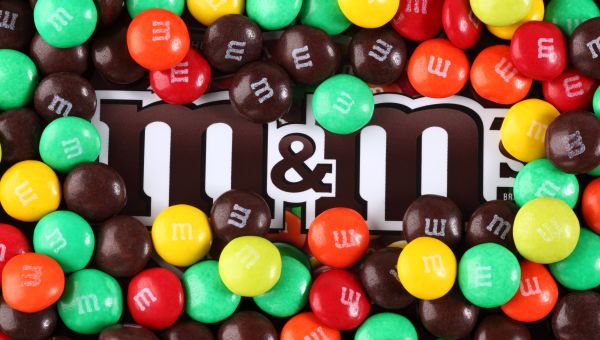
M&M's
These brightly-hued morsels are another favorite, and if you're not careful, can be overeaten without a second thought. Three fun size bag of the traditional milk chocolate candies contain 190 calories, 4.5 grams of saturated fat and 26 grams of sugar. These chocolate bits do contain a bit of protein—2 grams per serving.
Peanut M&M's come in small packages too, and offer 180 calories, 3.5 grams of saturated fat and 18 grams of sugar per two-bag serving. The nutty variety contain an extra gram of protein and boast 6.5 grams of healthy, unsaturated fats per serving.
Regardless of which variety you choose, these candies are coated in a plethora of artificial coloring, which may be a concern for some. "On Halloweens it's OK, but not on a daily basis," Silverman says. More information is needed to draw conclusion about the effects of artificial coloring on the body, but the American Academy of Pediatrics recently released a list of additives, including dyes, with the potential to harm children.
If you want to steer clear of artificial colors and other additives altogether, serve yourself a bowl of bite-sized fruits, like sweet blueberries, blackberries and raspberries.
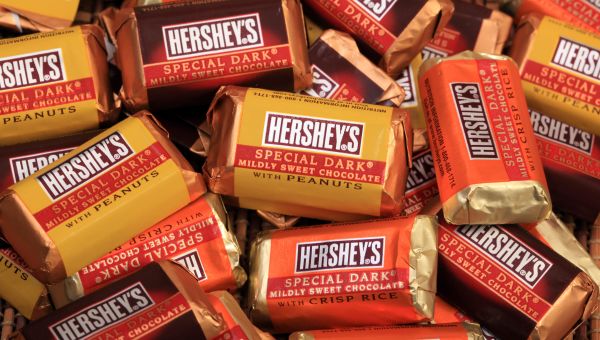
Hershey's dark chocolate
These golden-wrapped nuggets may not be the most exciting holiday option, but they're one of the better holiday options. "Dark chocolate would be the best choice," Silverman says. "It has less sugar and contains antioxidants," she adds.
If you're munching from a large bar, section off just an ounce and savor. That bite has 153 calories, 13 grams of sugar and 5 grams of saturated fat. If the minis are piled high in your treat bowl, grab no more than five—but the fewer the better. Most packages of minis offer a variety of flavors, like peanut and crisp rice. Per five-piece serving, these dark chocolate blocks contain 200 calories, 7 grams of saturated fat and 19 grams of sugar.
Despite being a "better" option, dark chocolate still contains excess sugar and calories, so don’t overindulge.
More On


video

article

slideshow


video


video
